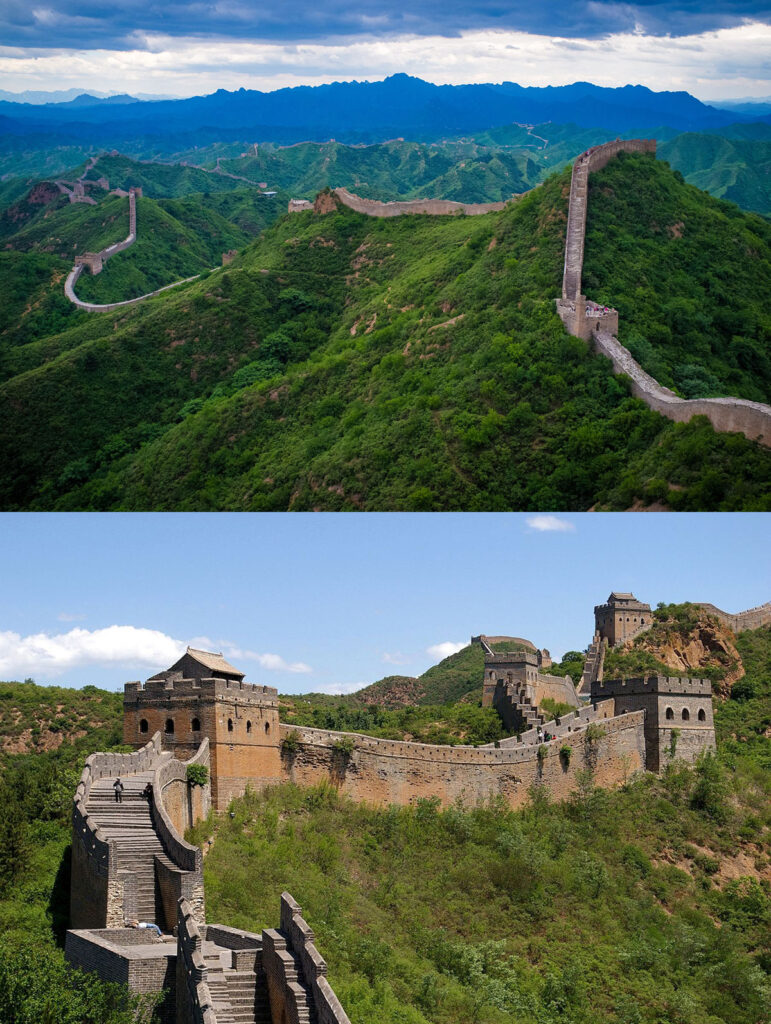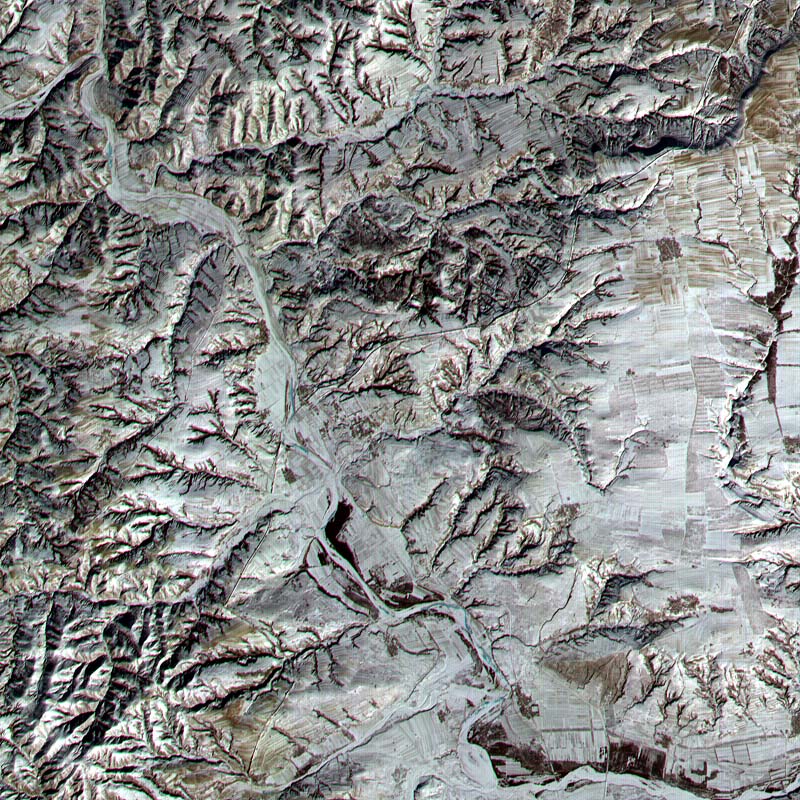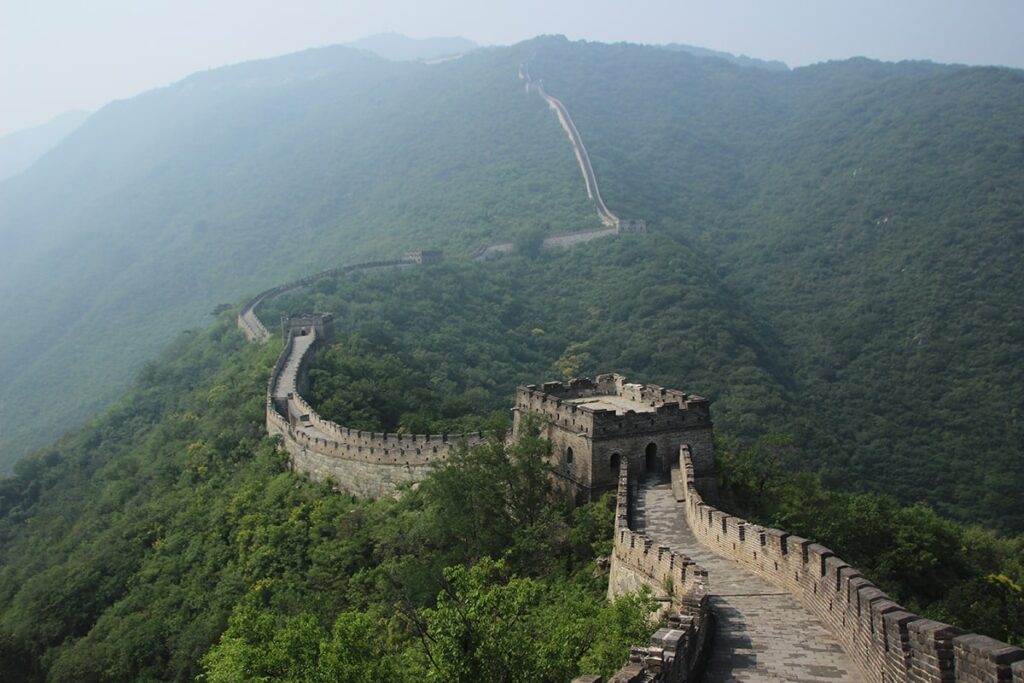- The seven wonders of the world: The Great Wall of China was not among the ‘Seven Wonders of the Ancient World’ (2nd century BC), but was included in the 2007 list of the ‘New Seven Wonders of the World’
- Length: There are no historical records indicating the exact length of the Great Wall of China. Today, there are two official figures: the current length of 8,851.8 km and the total estimated length over time of 21,196.18 km. In comparison, the Earth’s circumference is 40,000 km at the equator. This makes the Great Wall of China the longest building on Earth
- History: The first sections of the Great Wall were built independently in the summer months between the 8th and 5th centuries BC. However, they were not unified into what we now call the Great Wall until the Qin Dynasty in 220 – 206 BC. The purpose of the wall has always been to protect the northern part of China from outsiders (mainly the Mongols and Manchus)
- Behavior: The Great Wall of China is primarily made up of stone, brick, earth, clay, wood and other materials. The workforce that built the wall consisted mainly of soldiers – i.e. peasants recruited by force – convicted criminals and prisoners of war
- Names: The Great Wall of China is also called ‘The Great Wall’. In Chinese, the wall is called ‘changcheng’, which means “long wall” or ‘wanli changcheng’, which means “The 10,000 Li Long Wall” (Li is a unit of measurement equivalent to 500 m)
- Tourism: The Great Wall is China’s largest and most popular tourist attraction. The most visited part of the Great Wall is Badaling, close to Beijing. This section of the wall was built during the Ming Dynasty (1368 – 1644) and was the first section of the wall to be opened to tourists in 1957. The Badaling section has been visited by more than 300 heads of state and VIPs from around the world
- Other walls: The Great Wall is far from the only fortification in China; the total length of all defense walls built in the country over 2,000 years is a whopping 50,000 km! In comparison, the circumference of the Earth is 40,000 km
- Qin Dynasty: The first more extensive walls in China were built by Qin Shi Huang (260-210 BC) during the Qin Dynasty and Qin is considered to be the “collector” of the first sections of the Great Wall. He was also the first ruler to unify China and is best known for his legendary Terracotta Army. The name ‘China’ is also derived from ‘Qin’ (pronounced “chin”)
- Shrinkage: During the Cultural Revolution (1966 – 1976), many of the bricks in the Great Wall were taken to build houses, farms and the like. Today, large parts of the wall are in disrepair. It is estimated that several of the northwestern parts (e.g. in Gansu and Ningxia provinces) will disappear in about 20 years – partly due to nature and partly due to man
- Provinces: The Great Wall of China crosses the following provinces in China: Liaoning, Hebei, Tianjin, Beijing, Shanxi, Shaanxi, Ningxia and Gansu

Fact: The Great Wall of China was built over a period of approximately 2,000 years. It has two official lengths: 8,851.8 km (current length) and 21,196.18 km (estimated historical length)
Myths about the Great Wall of China
- Visibility: Contrary to popular belief, the Great Wall of China is not visible from space without visual aids. The persistent myth originally originated in an 1893 issue of the American magazine ‘The Century’. The claim was revived in 1932 when Robert Ripley of ‘Ripley’s Believe it Or Not’ claimed that the wall could be seen from the moon (and this was at a time when man had not yet left Earth…). NASA has stated that the wall is barely visible to the naked eye if you’re in close Earth orbit and weather conditions are ideal – but then many other man-made structures are also visible
- One long wall: It’s a myth that the entire Great Wall of China was built all at once as one long wall. In reality, it was built in several stages by different dynasties in an attempt to protect China’s northern border from outsiders
- Longest cemetery: During the construction of the wall, it was dubbed the ‘Longest Churchyard on Earth’ because it claimed the lives of many workers. According to some sources, more than 1 million people died during the construction of the wall – however, this is not a documented fact
- Human bones: Two other old myths are that “the mortar used in the Great Wall of China was made from human bones” and that “people were buried in the wall to make it stronger”. The mortar in the wall is actually made from rice flour – and no bones have ever been found in the wall
- Dragon: According to legend, a helpful dragon “mapped out” the construction route of the Great Wall of China for the workers
- Meng Jiang Nu: Another popular legend is the story of Meng Jiang Nu, who was married to one of the workers on the Great Wall during the Qin Dynasty. When she heard of her husband’s death, she cried until the wall collapsed, exposing her husband’s bones so only she could bury them

The Great Wall of China is not visible from space without visual aids. However, NASA has stated that you can barely see the wall with the naked eye if you are in very close Earth orbit and if the weather conditions are good – but then many other buildings are also visible. Here is a satellite photo of the wall (it runs from the bottom left corner to the top right – not to be confused with the much more visible river from the top left corner)





